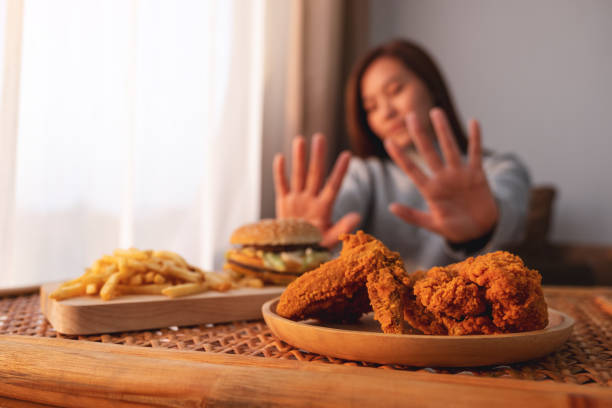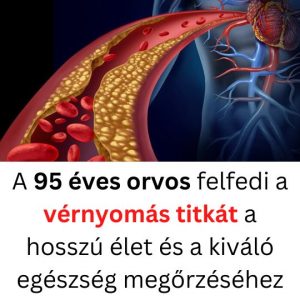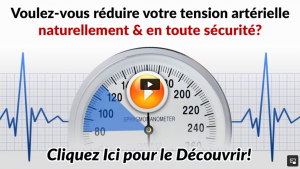The #1 Rated Blood Sugar Formula
50 Foods and Drinks to Avoid for People with High Blood Pressure

Having high blood pressure does not necessarily mean a person has to eliminate specific foods from their diet. Rather than trying to cut these out, a person should focus on moderation and finding healthy substitutes for their favorite snacks.
1–6. Salty foods
Sodium can elevate blood pressure. Many people eat too much sodium without realizing it. Processed and fast foods usually contain excessive amounts of sodium, often more than the 2,300 milligrams a person should consume per day. It is advisable to check nutrition labels and be aware that even foods people tend to consider healthy, such as vegetable juice, may be high in sodium. Examples of foods with high levels of sodium include:- pizza
- sandwiches
- cold cuts and cured meats
- canned soup
- tacos and burritos
7–11. Sugary foods
Sugary food offers few health benefits and raises a person’s risk of unintentional weight gain. It may also contribute to high blood pressure. A 2014 study suggests sugary foods may increase blood pressure even more than salt. The study mentions foods containing high fructose corn syrup as a factor that can raise blood pressure. The following are examples of foods that may contain high fructose corn syrup:- processed desserts
- prepackaged meals
- crackers
- granola bars or other nutrition bars
- peanut butter
12–17. Red meat
Red meat can raise a person’s blood pressure. The process of metabolizing red meat in the body may also release compounds that elevate blood pressure even more. The following are all red meats:- beef
- lamb
- pork
- veal
- venison
- goat
18–19. Sugary drinks
While having the occasional sugary beverage can be OK, drinking lots of sugar-sweetened drinks may raise blood pressure. Moreover, many sugary drinks also have caffeine in them, which can elevate blood pressure even more.
Sugary drinks that may contain caffeine or high fructose corn syrup can include sodas and fruit juices.
20. Alcohol
Drinking too much alcohol can raise a person’s blood pressure, according to the American Heart Association. Excessive alcohol drinking may also be an independent risk factor for heart disease. Alcohol also contains lots of empty calories. Consuming it may cause unintentional weight gain or replace healthier meal options. The AHA advises that males limit alcohol to no more than two drinks per day and that females have no more than one drink daily.21–44. Saturated fats
A person looking to lower their blood pressure or reduce their risk of high blood pressure should limit their intake of saturated fats. For most people, this means that no more than 5–6% of daily calories should come from saturated fats, which can be present in sweets and baked goods. Examples of foods containing saturated fats include:- desserts, such as chocolate, toffee, cakes, puddings, biscuits, and pastries and pies
- processed meat, including sausages, burgers, bacon, and kebabs
- cooking fats, such as butter, lard, ghee, dripping, margarine, goose fat, or suet
- oils, including coconut oil and cream and palm oils
- full-fat dairy products, such as cream, milk, yogurt, crème fraiche, and cheese
45. Processed and prepackaged foods
Packaged foods that might seem healthy, such as vegetable- and meat-based meals, may get much of their flavor from high levels of sodium. It is advisable to avoid these foods as much as possible or check nutrition labels and choose only those products that have a relatively low sodium content.46–49. Condiments
A person with high blood pressure does not need to avoid all condiments. However, it is important to check the label, as some products can contain high amounts of sugar or sodium. It is also important not to rely on taste, as even condiments that do not taste salty may be high in sodium. Examples of condiments that may contain high amounts of salt or sugar include:- ketchup
- chili sauce
- soy sauce
- salad dressings
50. Caffeine
Caffeine can temporarily elevate blood pressure, causing very high blood pressure readings. People trying to limit their caffeine consumption may choose to drink less regular coffee or replace it with decaffeinated coffee. People with a history of dangerously high blood pressure may need to contact a doctor to discuss decreasing or eliminating their caffeine intake.Foods to include
Eating a varied diet full of nutrient-dense foods can help reduce high blood pressure. Some foods worth including in the diet are:- whole grains
- fruits and vegetables, such as leafy greens, avocados, berries, and citrus fruits
- lean meats, including grilled chicken, chicken breast, and fish
- other protein sources, such as lentils, nuts, quinoa, and tofu
Replacement ideas
Consider replacing processed foods with heart-healthy alternatives. For example, instead of a sugary snack, choose some fruit. It is also better to opt for carbonated or flavored water rather than soda. People can also try substituting condiments with cracked pepper and a jalapeno.Sample daily meal plan
The National Heart, Lung, and Blood Institute recommends that people working toward a healthier diet make gradual changes. A person might start by eliminating one unhealthy food each week or gradually eating smaller portions. This table shows how many servings of different foods a person should include per day according to the number of calories (kcal) they consume:| 1,600 kcal | 2,000 kcal | 2,600 kcal | |
|---|---|---|---|
| Grains | 6 | 6–8 | 10–11 |
| Vegetables | 3–4 | 4–5 | 5–6 |
| Fruits | 4 | 4–5 | 5–6 |
| Fat-free or low fat milk products | 2–3 | 2–3 | 3 |
| Lean meats, poultry, fish | 3–6 | <6 | 6 |
| Nuts, seeds, legumes (per week) | 3 | 4–5 | 1 |
| Fats, oils | 2 | 2–3 | 3 |
| Sweets, added sugars | 0 | <5 (per week) | <2 |
- Breakfast: whole grain toast with fruit and a glass of milk, or oatmeal with fruit
- Lunch: grilled chicken with a side salad, or a bowl of quinoa and a serving of fruit
- Snack: fruit, vegetables, cheese, whole grain pasta or bread, or a fruit and a vegetable smoothie
- Dinner: whole grain pasta, eggs, and a vegetable or fruit, or nuts with lean meat, such as chicken, and a few fruit sides
Daily habits
A number of lifestyle changes can help lower blood pressure and improve heart health, including:- quitting smoking, if applicable
- reaching or maintaining a moderate weight
- finding strategies to manage stress, such as meditation or journaling
Complications
High blood pressure increases a person’s risk of developing a number of health problems, including:- stroke
- heart attack
- vision problems
- sexual dysfunction, such as erectile dysfunction or difficulty achieving orgasm
- kidney disease
- circulatory problems, including peripheral artery disease
- blood clots
- heart health issues, such as atrial fibrillation
When to contact a doctor
High blood pressure is a medical emergency if the systolic blood pressure, or the top number, is above 180 or if the diastolic blood pressure, which is the bottom number, is above 120. A person should consult a doctor if:- they believe they have high blood pressure
- their blood pressure remains high in spite of having made lifestyle and dietary changes
- their blood pressure continues to rise
- they experience side effects from blood pressure medication
Summary
High blood pressure is a serious health risk factor. It is also treatable. Eating a varied diet full of nutrient-dense foods can help a person reduce high blood pressure and thus minimize their risk of serious heart health issues. Frequently Asked Questions:50 foods and drinks to avoid for people with high blood pressure
- Salty foods.
- Sugary foods.
- Red meat.
- Sugary drinks.
- Alcohol.
- Saturated fats.
- Processed and prepackaged foods.
- Condiments.
Tips to lower blood pressure
- vegetables, such as spinach, broccoli, and carrots.
- fruits, such as apples, oranges, and bananas.
- fish, particularly those rich in omega-3 fatty acids.
- lean cuts of beef or pork.
- skinless chicken or turkey.
- eggs.
- fat-free or low-fat dairy products, such as cheese and yogurt.
Avoid Sodium-Heavy Foodsbest food for high blood pressureBest Foods for HypertensionBlood Pressure and SodiumBlood pressure DietDASH diet to Lower Blood PressureFoods To Avoid for Hypertensionfoods to avoid with high blood pressurenatural way to lower blood pressureWorst Meats for High Blood Pressure







